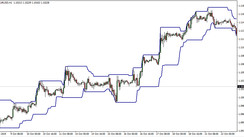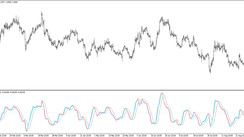After ending last week at record highs, major US stock index futures have been declining since the start of the trading day. S&P 500 futures were down 0.3%, Dow Jones Industrial Average futures were down 0.4% by the start of today's European session. As of this writing, S&P 500 futures are traded near 4395.0, down 20 points from the all-time high of 4415.0 reached last Friday.
The decline in stock indices is taking place against the backdrop of a renewed decline in oil and other commodities quotes and an increase in demand for US government bonds, which, accordingly, leads to a decrease in their yield and, in part, to a fall in the dollar. Thus, the yield of popular American 10-year bonds is 1.235% at the time of publication of this article, which corresponds to the levels of mid-February.

Even 2.5 months ago, it exceeded 1,700%. However, investors continue to hedge against risks due to growing fears about the spread of the coronavirus in the world.

The DXY dollar index is declining today, but still maintains a positive trend. The demand for the dollar as a defensive asset supports its quotes and does not allow it to decline, despite the fall in the yield of US government bonds. The further spread of the coronavirus remains a serious risk to the global economy, which is supporting the dollar.
The focus of investors this week is the Fed meeting, which will conclude on Wednesday with the publication (at 18:00 GMT) of the decision on the interest rate. Earlier, Fed officials have repeatedly stated that they will not slow down the rate of bond purchases until they see "significant further progress" in achieving the inflation target of 2% and the labor market reaching pre-crisis (before the pandemic) levels. Inflation is now well above the target, but Fed officials still expect it to slow. And, since they previously promised to warn the markets in advance about the curtailment of stimulus, then, most likely, they are unlikely to start such a curtailment at the upcoming July meeting.
Nevertheless, the intrigue around the intentions and actions of the FRS remains, since after the meeting in June, 13 out of 18 Fed leaders predicted a rate hike until the end of 2023, and 7 - until the end of 2022.
There are no important macro data scheduled to be published in the economic calendar today, that could cause an increase in volatility in the markets. Such an opportunity will appear tomorrow, when in 12:30 (GMT) June data on US durable goods orders will be released. This indicator reflects the value of orders received by manufacturers of durable goods, implying large investments. Previous values of the indicator "orders for durable goods": +2.3% in May, -1.3% in April, +1% in March, -1.2% in February, +3.4% in January 2021, +1.2% in December, +1.3% in November, +1.8% in October, -18.3% in April, -16.7% in March, +2.0% in February, - 0.2% in January 2020. Forecast for June +2.1%. In theory, the relative growth of the indicator has a positive effect on the dollar; the market reaction to its negative value may be negative for the dollar and the American stock market in the short term.
Despite the expected slight relative decline in June, the growth of indicators continues after their recovery in previous months from a strong fall in March and April 2020, which, in general, should have a positive effect on the dollar quotes and stock indices. Better-than-forecast data will also have a positive impact on them. In general, the long-term dynamics of the S&P 500 and the American stock market remain.
If, on the part of the Fed leaders, there are signals indicating their increasing propensity to curtail the stimulus program, this will be a bearish signal to the stock market. The tougher their statements about rising inflation and the outlook for the Fed's monetary policy, the more severe a downward correction may occur in the stock market.





